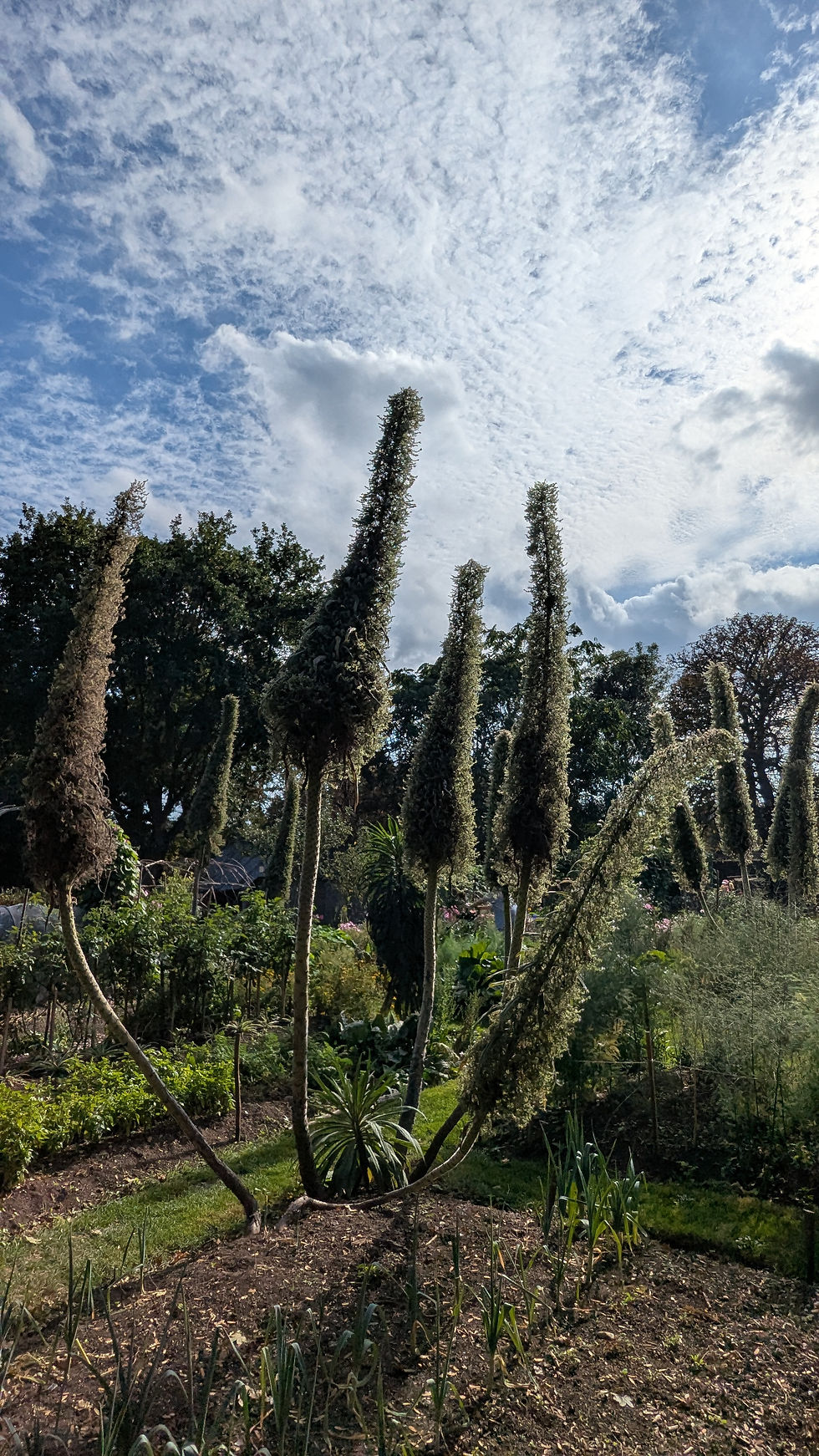Falling Leaves, Bliss and Beauty
- gardengateproject

- Oct 1
- 3 min read

As September eases away and October settles in, the garden shifts into its autumn rhythm. The grass is receiving its final trims of the year, while busy ladybirds still feast on the last of the aphids. Around the pond, the cigar-like bulrushes stand tall, while late amber sunflowers tilt against the crisp blue sky. Early bright pink nerines shine through the garden’s last hurrah of perennials, mingling with the bold reds of Penstemon and the airy purple spires of Verbena bonariensis.

With the harvest winding down, we are enjoying every moment of seasonal bounty. Bright, ruddy stems of rainbow chard bring colour to the beds, carrots are beginning to peak above the soil, and the last of the runner beans and tomatoes are being gathered. Of special pride this year is our bed of giant butternut squashes, which has produced a bumper crop. Their pale buff skins and elongated, hourglass forms glow against the autumn earth. Originally cultivated in the Americas, squashes became a staple for Indigenous peoples before travelling to Europe. Today, they are cherished worldwide for their rich, nutty flesh—perfect for velvety soups, creamy risottos, and hearty roasted dishes that warm the cooler evenings.

Elsewhere, deep crimson Amaranth seedheads sway like velvet tassels. Their soft, feathery texture is striking, and while they don’t carry a distinct scent, they are steeped in history. Native to the Americas, amaranth was a staple grain of Aztec and Inca civilizations. The seeds can be ground into flour, popped like corn, or simmered into a nutritious porridge, offering a wholesome link between past and present food traditions.

New to our herb garden this year is the liquorice plant (Glycyrrhiza glabra). Its history stretches back thousands of years, with medicinal uses recorded in ancient Greece, Egypt, and China. Closer to home, liquorice became a signature sweet in Pontefract, Yorkshire, where it was first combined with sugar and turned into the distinctive black lozenges still made there today. Beyond confectionery, liquorice root can be infused into teas for soothing digestion, lending a naturally sweet note without added sugar.

In the woodland, our variegated holly bushes are looking resplendent in the autumn sunshine. Their glossy leaves, edged in cream, frame clusters of bright red berries that provide a crucial food source for birds through the colder months. Holly has long carried significance in folklore—seen as a protective plant, a symbol of hope in the dark season, and a constant reminder of life enduring through winter’s chill.

Even as we savour autumn, thoughts are turning to spring. Now is the time to tuck daffodil and other spring bulbs into the soil, and to plan for tulips to be planted next month. We always enjoy experimenting with new colour combinations in containers—those chance discoveries often bring the most delightful surprises when the garden wakes again in spring.

In the art cabin, our crafting team has been busy creating autumn decorations. Pine cones have been transformed with dyes and paints, and the displays are glowing with seasonal shades of yellow, orange, and brown—bringing the warmth of autumn indoors.

We hope you will join us for our Falling Leaves Open Day on Saturday 18th October, 1–4 pm. Alongside the garden’s autumn beauty, there will be wood-fired pizzas, teas and cakes, pumpkin soup, craft activities, and a plant stall to take a little of the season home with you.

In the meantime, happy gardening from all of us at the Garden Gate Project!







Comments